Lecture 11: Emerging contaminants and pollutants
1/22
There's no tags or description
Looks like no tags are added yet.
Name | Mastery | Learn | Test | Matching | Spaced |
|---|
No study sessions yet.
23 Terms
What is Anthropocene Syndrome?
“a complex of environmental degradation, biological annihilation in the form of species losses, non-communicable disease epidemics, climate chanhe and increasing incivility in public and professional discourse”
“a set of signs and symptoms that are intertwined with politics, economics, policies (or lack thereof), and social values
AKA: Triple Planetary Crisis
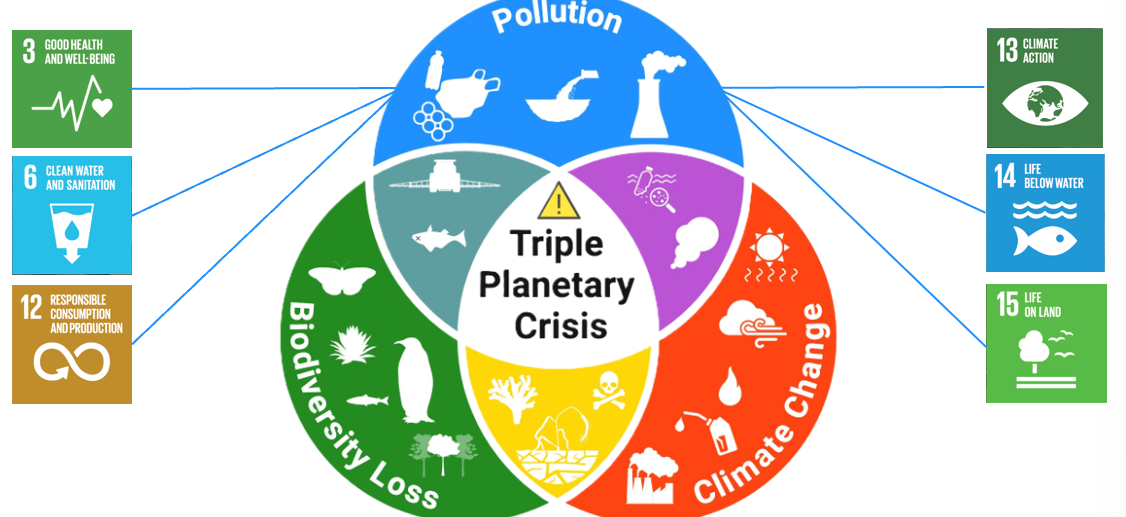
Contaminants vs pollutants
Contaminant: any physical, chemical, biological or radiological substance present in the env at levels that are not naturally occuring - do not necessarily cause harm
Pollutant: contaminants that cause, or are likely to cause, adverse biological, chemical or physical effects to organisms or ecosystems
Transition of contaminant to pollutant is determined by evidence of harm

What are plastics? What are their uses?
group of materials produced from natural or synthetically created resources
raw materials used to produce plastics are mostly found in nature e.g. cellulose, coal, natural gas, salt and crude oil

How is plastic made?
Plastic is made by refining crude oil or natural gas into monomers, which are chemically bonded into polymers through polymerization.

Why is plastic an environmental issue?
They are persistent and can last millions of years: around 52.1 million tonnes enters the environment each year
plastic has strong chemical bonds (long chains of C-C or C-H bonds
resistance to biological attack
hydrophobicity - plastics repel water which reduces chemical weathering processes
physical durability - resist mechanical damage, abrasion and temp changes
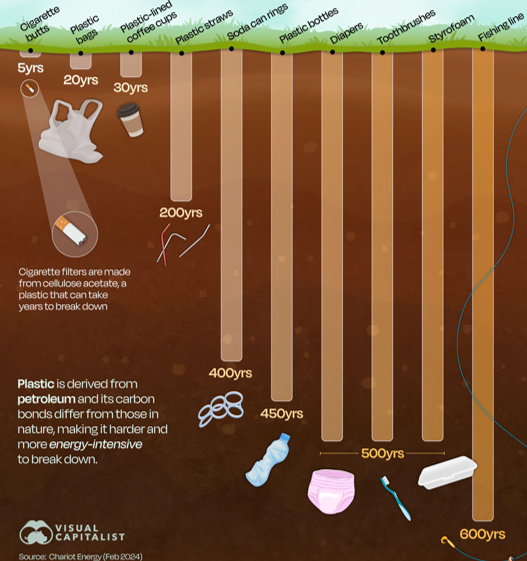
Why can’t plastic be recycled easily?
Not all plastics are equally recyclable
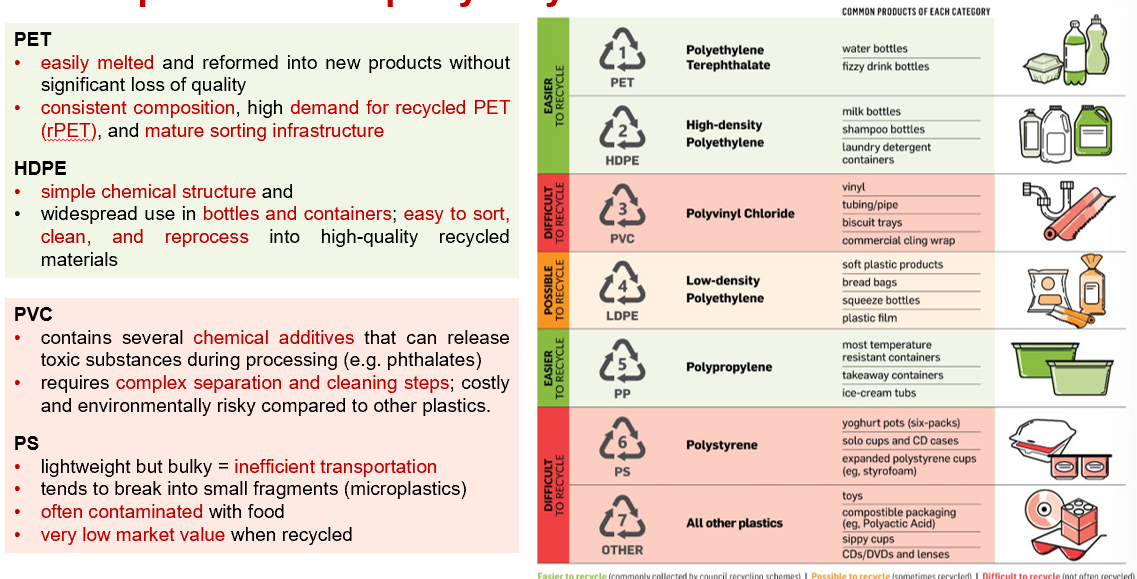
What is the reality of plastic recycling?
virgin plastic is often cheaper, reducing demand for recycled plastic
wealthy nations export plastic overseas where it is poorly disposed of
without strong legislation, recycling ramains voluntary or economically unattractive for many industries
mixed/dirty plastics are costly to clean and recycle, meaning much collected material is incinerated or landfilled
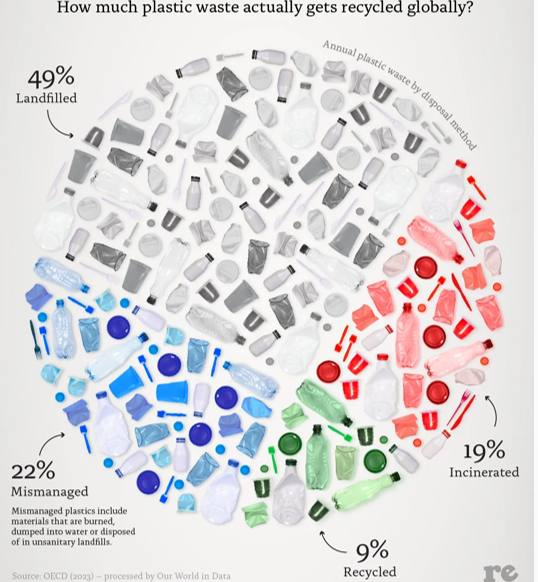
What are Microplastics?
<5mm
come mostly from land-based sources (80-90%) like urban runoff, wastewater and industrial activities
coean based (10-20%) fishing activities mostly
Primary: microbeads in cosmetics
Secondary: breakdown of larger plastics
they are found everywhere - in all environments
Research of microplastics
Womens health: microplastics found in human ovary follicular fluid
Bioaccumulation of microplastics in decedent human brains
Leaf absorbtion contributes to accumulation of microplastics in plants
One piece of chewing gum could expose you to 250,000 microplastics
Transport of microplastics: rivers
Rivers:
contamination of riverbeds significantly reduced by catchment-wide flooding
there are multiple urban contamination hotspots with a max microplastic concentration of ~517,000 particlesm-²
the concentration of microplastics in river bed sediments of the Mersey catchment is higher than in any other environment
the post-flooding microplastic dataset reveals a striking pattern of microplastic evacuation from study catchments
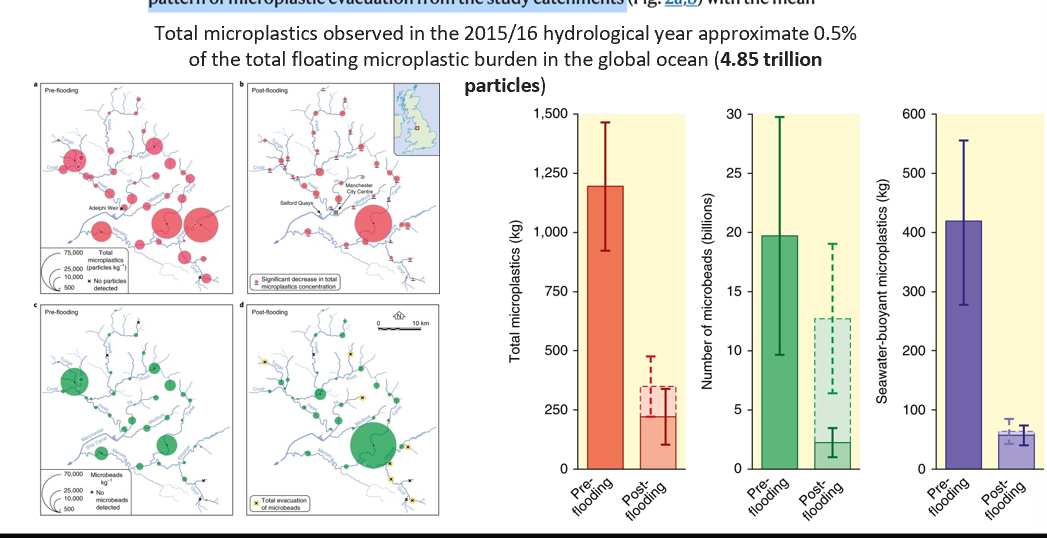
Transport of microplastics: oceans
seafloor microplastic hotspots are controlled by deep-sea circulation
Hadal trenches:
major depositories for plastic pollution
microplastics found in the deepest parts of the ocean
cascading processes that transport microplastics from land to sea are at play
tropic transfer, biological interaction and physical processes play key roles
Are microplastics contaminants or polutants?
in the ocean plastic debris kills marine animals
marine plastic has impacted ~267 species worldwide uncluding 86% of turtle species, 44% seabird species and 43% of all marine mammals
fatalities are due to: ingestion, starvation, suffocation, infection, drowning and entanglement
studies assess presence of microplastics in organisms
“Oyster reproduction is affected by exposure to polystyrene microplastics” - this study provides evidence that microPS cause feeding modifications and reproductive distruptions in oysters
they are POLLUTANTS
Microbial degredation of plastics
Microbial degradation uses specific microbes and enzymes (like depolymerases, hydrolases and peroxidases) to break down plastics
Microbes can decompose biodegradable plastics (PHA, polyesters) even in extreme environments like the deep sea floor (757-5552m)
New microbial communities and pathways have been identified in plastic contaminated soils
Genomic studies reveal novel enzymes and microbes for bioplastic production and degradation
The bacterium Ideonella sakaiensis can degrade PET plastic by using it as an energy source, producing two enzymes that break it down into environmentally friendly monomers (terephthalic acid and ethylene glycol)
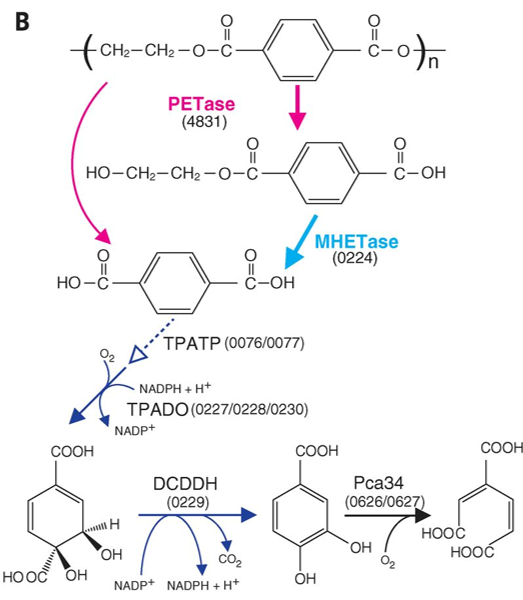
Mussles as Plastic Filters
they naturally filter microplastics from water
pilot projects suggest mussel beds can trap and concentrate plastics for easier removal
prof Lindeque from plymouth marine laboratory has been experimenting with nature-based solutions using mussels - “5kg mussles can remove microplastics by a quarter of a million pieces per hour”
What is the most effective approach to addressing the plastic pollution crisis?
A multi-pronged strategy is essential, combining:
Waste reduction (less production and use of single-use plastics)
Improved recycling (mechanical & chemical recovery)
Active collection (e.g., river booms, beach cleanups)
Emerging innovations like biodegradable plastics and microbial degradation (e.g., PETase), though promising, are not yet scalable.
→ Combination of reduction, recycling, and recovery is the most realistic and effective solution.
What are PFAS?
‘Forever Chemicals’
Synthetic compounds found in firefighting foams, stain resistant fabrics, non-stick cookware, food packaging
Characterised by extremely strong carbon-fluorine (C-F) bonds
Highly mobile, leaching into groundwater and surface waters
resistant to chemical, biological and thermal breakdown
Per - and polyfluoroalkyl substances in the environment (study)
PFAS persist on geologic time scales and can bioaccumulate to toxic levels
remediation is possible but expensive and is complicated by dispersion in soil, water and air
Environmental behaviour of PFAS
longer chain PFAS (more C atoms) bioaccumulate more strongly
marine environments show higher bioaccumulation than freshwater or brackish systems
both PFCA and PFSA accumuklate, but patterns differ slightly by chemical type and ecosystem
PFAS evidence of harm
bioaccumulates in human and animal bloodstreans
linked to cancers (kidney, testicular), immune suppression, thyroid disease (EPA, 2022)
Detected in drinking water, wildlife (even remote arctic)
health advisories now recmmend near-zero exposure levels
urgent regulatory and public health responses underway
POLLUTANTS
How is the issue of PFAS being addressed?
Capture technologies: Activated carbon, ion exchange resins
Destruction methods: High-temperature incineration, plasma treatment (expensive)
Nature-based solutions (early stage): Wetland attenuation, sorption into organic-rich soils
Prevention focus: Reducing use and emissions of PFAS at source
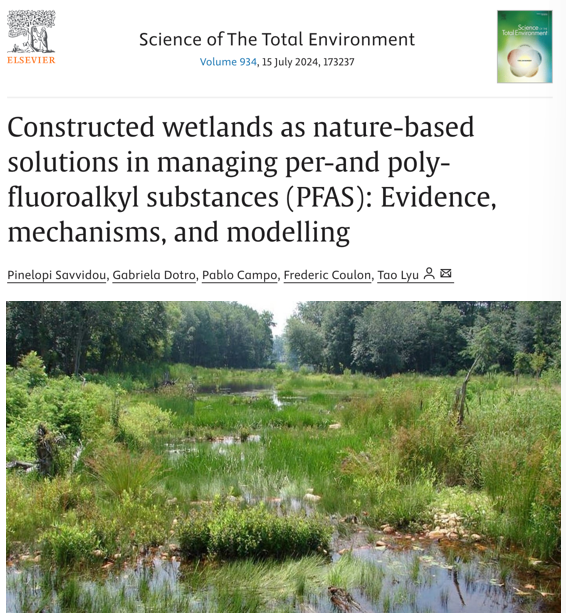
Name some other emerging contaminants
pharmaceuticals and personal care products
endrocrine disrupting chemicals
industrial additives and plasticisers
pesticides and herbicides
flame retardants
nanomaterials
Why are plastics and PFAS so critical
They contribute to the Triple Planetary Crisis: Climate, Nature, Pollution
The solutions directly align with SDGs:
6 - Clean water
12 - Responsible consumption and production
14 - Life below water
15 - Life on land
Lecture key takeaways
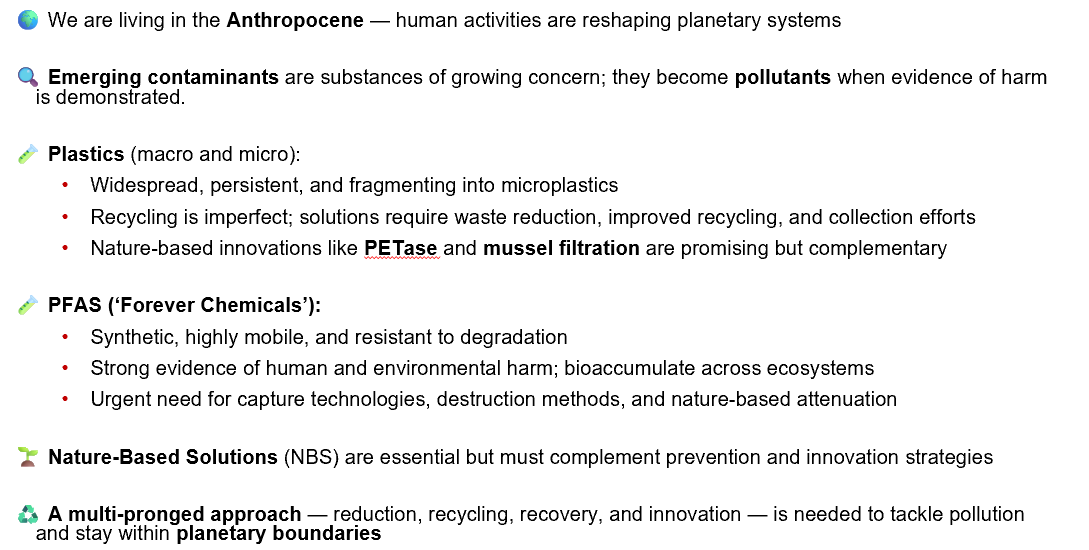
Paper: Pharmaceutical pollution of the worlds rivers
Global study of 1,052 sites in 104 countries found widespread contamination of rivers with 61 active pharmaceutical ingredients (APIs) - particularly in low to middle income countries which lach proper waste infrastructure.
Common APIs: Carbamazepine, metformin and caffeine
Hotspots: Sub-Saharan Africa, South Asia, South America
25.7% of sites have API levels above safe limits for aquatic life or antimicrobial resistance concerns
Pharmaceutical pollution is a global threat to ecosystems, human health, and SDG progress